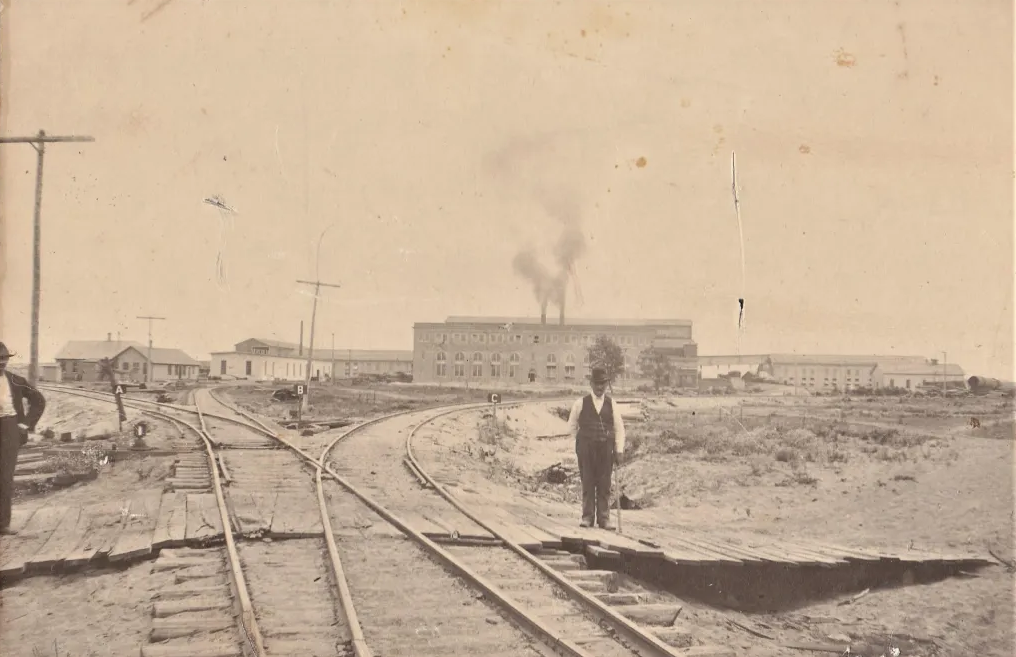Marlbrough, MI
The town of Marlborough, as seen from look-out tower.
Seven railroad cars per day were filled with cement products produced by the Great Northern Portland Cement Company.
Marlborough…
A Ghost Town
Just say the two words "ghost town” and you will be assured a captive audience. Those words start the imagination going and you think of times past and people who lived years ago.
We had such a town in Lake County Called Marlborough. To visit this town, go north on M-37 to the caution light at 76th Street (Big Star Lake) just south of Baldwin. Turn right (east) and go about a mile to cross the Pere Marquette River. Just beyond the river is James Street. Go north on James street and you will again cross the river. About “a stones’s throw” on the right, watch for the skeleton of a huge building with trees and brush going on it. You have reached the post town of Marlborough! This monument is all that remains of a formally thriving town. (The date on one of the cement blocks laying in the ruins indicates 1885). Here’s the story, as gleaned from a variety of sources.
Frederick Farnsworth, an industrialist from the Detroit area, had the idea he could turn marl from area lakes into cement. (Marl is the decomposed shell of clams and snails.) He organized the Great Northern Portland cement Company and begin advertising for investors. Money and workers soon began pouring in. The plant took shape as buildings needed for the manufacturing process went up. By 1905, there were 72 homes, a school, a general store, post office, hotel, and an opera house. The population swelled to 400.
Everything seemed to fall into place to attract success. The berry railroad played an important part in the existence of the plant. It brought mail and food and transported the cement. An 88-room three-story hotel was built. The opera house boasted a modern stage, dressing rooms, electric lights, steam heat and modern plumbing. Marlborough had the biggest power plant in Lower Michigan.
At the height of this time, the plant empaled 200 workers and produced 1200 barrels of cement per day. The process required 350 pounds of clay and one ton of marl to make the cement. The end was in sight when the supply of marl was depleted. The heyday lasted about four years and the company closed in 1907. During World War I, wrecking crews came in and salved the steel from the pant. Nature took over and the pictures show the remains. Watch and listen for ghosts when you visit Marlborough!
Wet grinders used for clay at the former Great Northern Portland Cement Company in Marlborough, Michigan.











